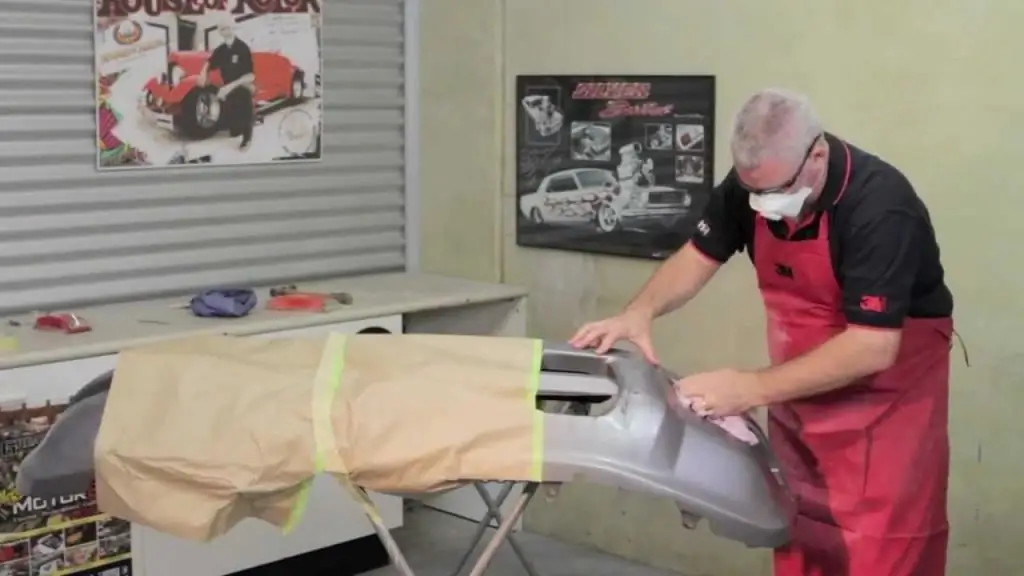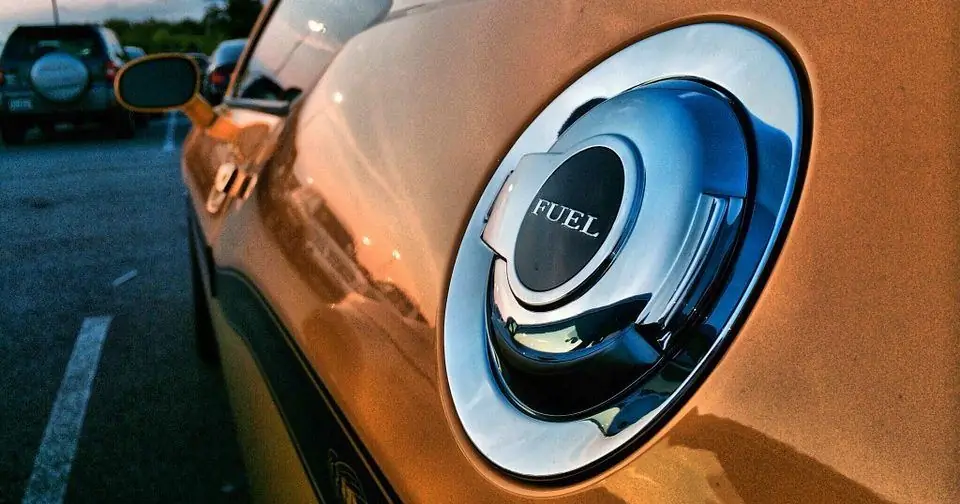2025 Author: Erin Ralphs | [email protected]. Last modified: 2025-01-22 21:14:16
Surely every motorist knows that impurities in the gas tank are fraught with unpleasant, as well as serious consequences. Plain water can also be attributed to clearly undesirable elements. This problem is especially pronounced in winter, when the temperature outside the car drops below zero.
So, let's try to figure out how to remove water from a car's gas tank and do it as safely as possible. Both for the driver and for the system itself. We will also figure out why moisture enters the fuel compartment and how to avoid it.
How do you know there's a problem?
Before we figure out how to remove water from a gas tank, let's look at the main symptoms that indicate moisture has entered the compartment. The main sign of the presence of foreign elements is a poor engine start.

This cause often appears after the car has been parked for a long time. If water has accumulated in the fuel compartment, starting the engine will take longer than usual. And in the process of warming it up, it periodically stalls.
Moreone reason that indicates that it is necessary to remove water from the gas tank is the appearance of a characteristic knock in the engine. During a cold start, the crankshaft begins to vibrate noticeably, and behind it the whole car. After warming up, the shaking level decreases as the moisture gradually evaporates.
Causes of moisture
Sometimes it's easier to eliminate the cause of the appearance than to remove water from the gas tank. The most common way for foreign elements to enter the fuel compartment is through the throat. That is, water enters the tank in the same way as gasoline itself. The entire fuel transfer system is otherwise sealed.

Another reason is condensation. If you infrequently refuel the vehicle and/or operate it on a small amount of fuel, condensation may form from the latter. It remains on the walls of the fuel compartment and gradually flows down. Water is heavier than gasoline, so it sits at the very bottom. Right where most cars have their fuel system.
It is the accumulated condensate that does not allow the engine to start normally and indicates that it is time to remove water from the gas tank. In addition, purchasing fuel at questionable gas stations can also cause moisture in the fuel system. It has long been no secret that small gas stations on highways simply dilute fuel with water.
Well, the last reason for the appearance of moisture in the fuel system is the deliberate actions of ill-wishers. If you don't want bullies to pour somethen foreign liquid, then take care of reliable protection - a lid with a lock.
Getting rid of moisture in the fuel system
If you are sure that there is definitely water in the gas tank, then it is better not to force the engine once again and get rid of the moisture accumulated in the system as soon as possible. Let's analyze a few basic methods that are practiced by both professional car mechanics and garage craftsmen.
Tank removal
This is the most effective, but at the same time time-consuming method. It allows you to completely remove water from the gas tank in both winter and summer. It is best to carry out this procedure at the bus station, or at least in the presence of a knowledgeable person. And also before you remove the tank, use up all the fuel.

To remove the gas tank, you need at least an inspection hole. The process itself cannot be called complicated, namely laborious. You need to carefully disconnect all the pipes and wires coming to the tank, and then unscrew the fasteners holding it under the car.
If the system has an ornate design and the usual turning of the neck down does not help get rid of moisture, then many people use a regular hair dryer to dry it. It is best to find a more powerful model so that it can blow through all the "back streets".
Then it is necessary to mount the tank to its original place in the reverse order: first we fix the compartment to its regular place, and then we connect the fuel pipes and wires. If this option does not work, see how to remove water from the gas tank without removing it.
Method of communicatingvessels
Here you will need to remember the physics. To remove liquid from the tank, you must take a hose of sufficient length and any container - a bottle, a canister, etc. We lower one end into the fuel compartment, and the other into the prepared container. The container must necessarily be significantly below the level of the tank.

Atmospheric pressure will push the water out and it will slowly start to drain into the container. In some cases, you will have to “suck” the liquid from the hose in order to start the process of communicating the vessels.
Pumping
This method is suitable for vehicles with fuel injection. In most models, the fuel pump is located at the level of the rear seats. Therefore, they will have to be removed. You will also need to fold back the carpet canopy, where there should be a small compartment that opens access to the fuel pump.
The filter element is fixed, as a rule, with two clamps on both sides. It is necessary to remove the hose responsible for supplying fuel to the injector, and put in its place another tube that leads to a previously prepared container. Then you need to start the engine. The pump will start to work and pump out everything superfluous from the tank (including gasoline itself).
After that, you need to fix all the elements in their places and pour fuel into the gas tank. After such a cleaning, it is best to fill the fuel compartment at least halfway and with fuel with a higher octane rating (92 -> 95 / 95 -> 98).
Alcohol
One of the easiest ways to remove moisture from the fuel compartment without requiring anyserious labor costs - this is ordinary medical alcohol. The method is not the most reliable, but nevertheless effective, especially if there is no inspection hole or bus station at hand, and the engine coughs terribly.

If we consider that the average capacity of a car tank is about 45 liters, then 400-500 grams of alcohol is enough for this procedure. The composition must be poured into the fuel system and wait about half an hour. The fact is that water and alcohol mixed together form approximately the same density as gasoline. That is, the fuel will simply mix with water, and the “cough” effect of the engine should pass.
Further combustion of gasoline will take place without any deposits both on the tank and on the cylinder walls. It is also worth noting that alcohol must be of high purity and without any impurities. The best way to test the composition is to set fire to a small part of it somewhere safe. The flame should be almost invisible when burning.
Some people claim that you can remove water from a gas tank with acetone instead of alcohol, but experts do not recommend using this substance for such purposes. For this, there are special moisture-displacing additives. The latter contain isopropyl alcohol. Most often it is used to prevent icing of the fuel system. But it also fights moisture well.
Diesel engines. How to remove moisture?
If the car is diesel, you can remove water from the gas tank using a proven folk method. For thisyou need good quality engine oil. Winter is best, where viscosity is minimized.

To remove moisture from the fuel system, it is necessary to dilute diesel fuel in a ratio of 50 (solar oil) to 0.5. The oil reacts with water and is successfully processed in the combustion chamber without harming the engine. But you should not get carried away with this method, because the throttle response of the motor is noticeably lost during the processing of such a composition and it begins to "stupid" with a sharp acceleration of the car. The effect subsequently disappears when the engine continues to run on one diesel fuel.
Recommended:
How to drain gasoline from a car tank? Accessories and step by step instructions

Probably, there is not a single driver who did not get into such trouble as having to drain the fuel from the car's tank. It is very important to perform this action according to the safety regulations, and also to know which of the existing methods is suitable for your car
Do-it-yourself plastic car parts repair: methods and step-by-step instructions

Repair of plastic car parts: methods, instructions and preparation. Where can I repair plastic parts in the car. How to repair plastic in the car yourself. Do-it-yourself repair of plastic car body parts. Professional repair of plastic car products in St. Petersburg and Moscow
Why put alcohol in a gas tank? Alcohol in the gas tank to remove water condensate

Practically every more or less experienced driver has heard of the practice of using alcohol as a gas tank cleaner from water. Given that the winter cold will come very soon, it is simply necessary to remove excess liquid from the tank, because it can cause some problems (we will talk about them below). Someone thinks that you can pour alcohol into the gas tank, which will effectively remove water, but there are opposite opinions
Repair and restoration of the car body: step by step instructions and device

Even if you get into a small accident, the price of restoration work can be quite high. It seems that the complexity of the work is small and there is nothing complicated in their implementation. If there is a great desire, a little time, the necessary resources and tools, then restoring the body on your own is a completely feasible process. Let's look at the recovery technologies in stages
How to remove the rear wheel on a scooter: step by step instructions

A punctured tire, shock absorber repair, brake repair, or muffler repair leaves many riders wondering how to remove a rear wheel on a scooter. This is more difficult to do than it seems at first glance. Although the second wheel is attached with just one nut, this operation may require special skills and knowledge

